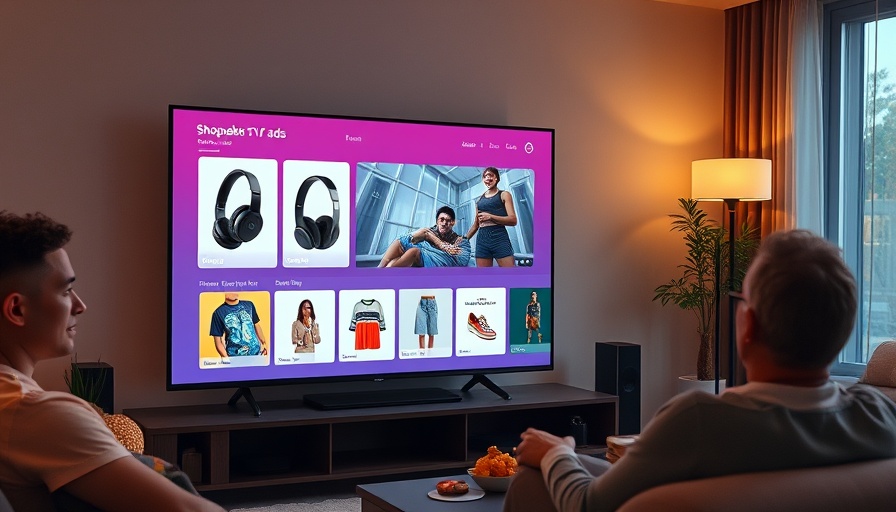
YouTube's Next Big Leap in Advertising
YouTube recently unveiled a groundbreaking ad format during its Upfront presentation, featuring an interactive product feed designed for shoppable connected TV (CTV) ads. The presentation, marked by a performance from Lady Gaga and appearances from notable YouTubers, sought to highlight the platform's evolving role in the advertising landscape. As more viewers watch videos on large screens while simultaneously scrolling on their phones, YouTube's new offering represents a clever fusion of traditional TV advertising and modern e-commerce opportunities.
Unlocking the Interactive Experience
With the new shoppable format, advertisers can strategically display products on the right side of the TV screen during commercials. This feature turns passive viewers into active participants, allowing them to engage with ads more intuitively. When a viewer selects an item from the interactive product feed, they can scan a QR code with their smartphone, linking them directly to purchase options, thus streamlining the shopping experience. Furthermore, the feature allows users to send all product information directly to their phones with a simple press-and-hold action, making it easier than ever to shop while watching content.
The Rise of Shoppable Advertising
The introduction of shoppable ads follows a broader trend across streaming services, with platforms like Amazon Prime Video also launching interactive shopping experiences this week. This shift is vital as advertisers strive to capture the attention of consumers who increasingly prefer multi-tasking environments where they can shop and watch simultaneously. A recent Kantar survey highlights that U.S. participants recognized YouTube as the number one platform for brand information, demonstrating its influence on consumer behavior.
Why This Matters for Advertisers
YouTube's dominance in TV viewing, as noted by Nielsen, positions it uniquely against competitors like Netflix and Disney+. The platform reported that TV screens were the primary devices for viewing YouTube content in the U.S. during the first quarter of 2025, which reinforces the strategic importance of integrating shopping features within its offerings. Notably, during the last quarter of 2024, YouTube campaigns on CTV generated over 50 million monthly average conversions, proving the effectiveness of this advertising medium
Interactive Shopping: The Future of Viewing
The potential implications of YouTube's new advertising format extend well beyond increasing sales for brands. They suggest a more profound shift in how audiences experience content. As consumers become accustomed to such interactivity, it could prompt other platforms to reevaluate their ad formats to compete effectively. Ultimately, this leap into shoppable TV ads exemplifies a future where watching television and shopping are fully integrated, transforming the viewer experience and creating new avenues for engagement.
The Bigger Picture: E-Commerce Integration
This innovative approach aligns with the broader e-commerce trends where brands are looking to tap into consumers' shifting online behaviors. The surge in online shopping facilitated by engaging content is a potent reminder of the importance of adapting to consumer preferences. Advertisers are now compelled to rethink their strategies and embrace the potential of interactive ad formats like YouTube's to stay relevant and effectively reach their audiences.
Conclusion: Embracing Change
YouTube's introduction of an interactive product feed for shoppable TV ads not only paves the way for advertisers but also signals a significant change in how content is produced and consumed. As platforms continue to innovate, advertisers must remain agile and open to embracing new technologies that can enrich the consumer experience and drive sales.
 Add Row
Add Row  Add
Add 



Write A Comment